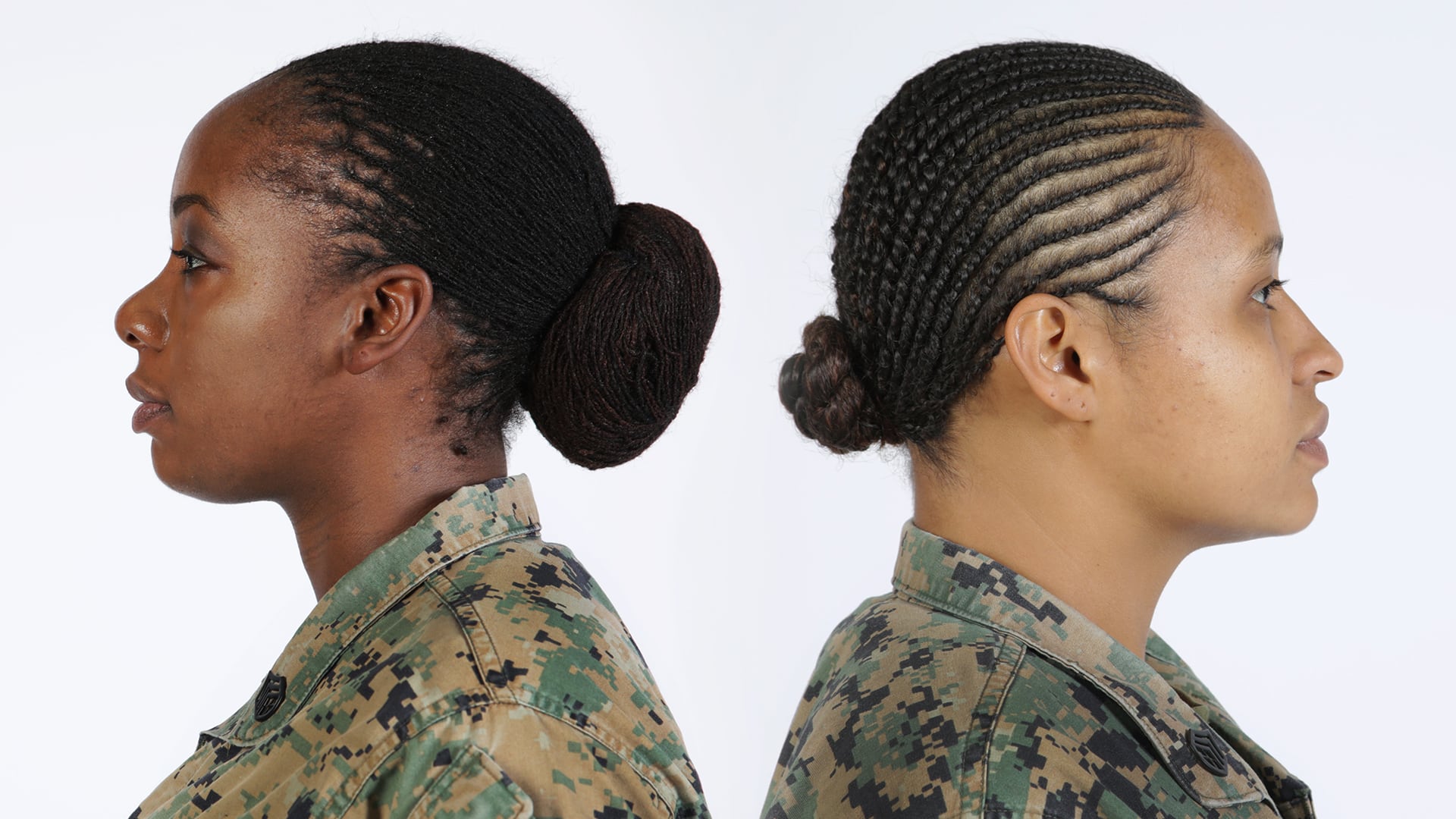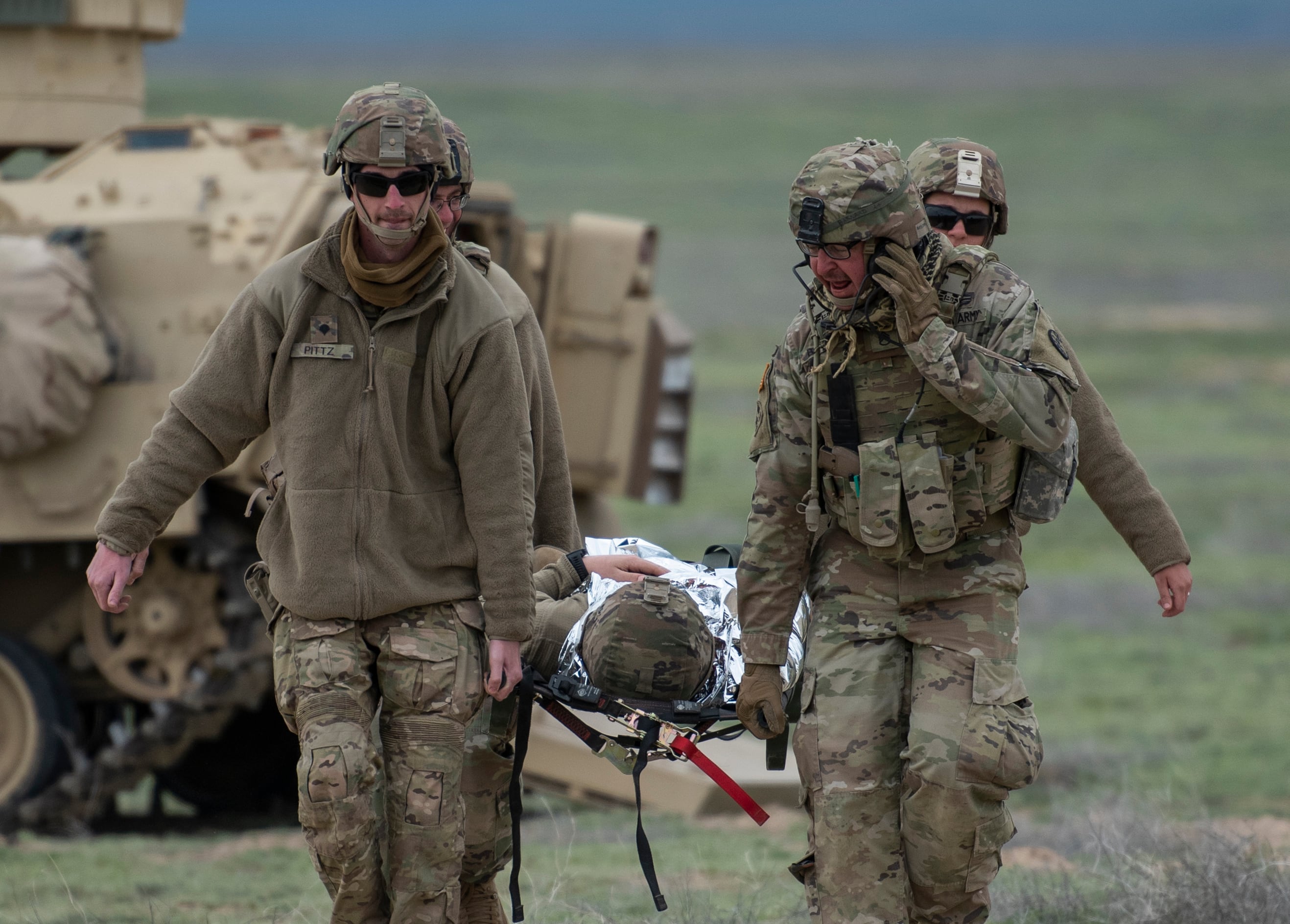The Army on Jan. 5 released a new grooming and appearance directive that authorized religious exemptions for turbans and beards for Sikh men and hijabs for Muslim women, but buried down in the document was a provision that changed everything for many black women in the service.
For the first time, Army Regulation 670-1 allows women to wear their hair in long, twisted "locks," as long as the strands are less than 1/8 inch wide, the scalp is in a uniform grid, and, when gathered, the hair fits into the required bun size of 3 1/2 inches wide by 2 inches deep.
"Is this a joke? Where's Ashton?" exclaimed Staff Sgt. Chaunsey Logan in a public video posted to her Facebook page. "On Jan. 5, in the year of our Lord 2017, we are now allowed to wear locks in uniform."
Facebook and Twitter flooded with the news, including excited posts from soldiers who had been waiting for the change.
"It feels amazing," said 1st Lt. Whennah Andrews, a District of Columbia National Guardsman, in a Wednesday interview with Army Times. "When I was going through this process, I just keep thinking about the females that were going to come after me."
Andrews, a seven-year Army veteran and prior-enlisted soldier, submitted an exception to policy request last year, complete with a YouTube video on the viability of locks in the Army.
Inspired by Marine Corps Staff Sgt. Cherie Wright, who led that service's effort to authorize locks, she teamed up with Nikky Nwamokobia, who runs a natural beauty channel on YouTube.
Together they created a video dissecting the Army's hair regulations, with visual examples of how soldiers could still be within standards with their hair in locks, the same way they can with braids and twists, which were already allowed.
"I read the regulation on it in detail, and it seemed as if someone who really didn’t understand what they were wrote it," Nwamokobia said.
Army officials could not confirm whether Nwamokobia's video tipped the scales for its decision to allow locks, but they confirmed that the topic of locks came up during the working group discussing religious headgear and beards, and regulations were changed as a result of those discussions.
Both women theorized, though, that the last hold-outs for a ban on locks were based on popular perceptions of large, free-form dreadlocks with no pattern.
"I felt like the biggest thing I want to do, and I felt like Nikky did a great job of doing that, was to remove the stigma," Andrews said. "People hear locks, they just think Rastafarian, [and] 'oh, it’s going to be unclean.'"
Making the case
For years, women in the Army had been forced to spend time, money and discomfort straightening their hair with chemicals or hot irons, wearing expensive and uncomfortable wigs, or cutting their hair off entirely in order to keep thick, coarse, curly hair within regulation, particularly women whose natural hair couldn't be coiled into a regulation bun.
"Our hair grows up," Nwamokobia said. "It doesn’t grow down."
To get their natural hair to lie flat, many women resorted to harsh salon chemical treatments to alter their hair's structure and make it grow straight. Even for those who preferred that style, Nwamokobia said, it could be tough for someone in the Army who is deployed for months at a time.
"Something that we all understand is when you color your hair, it starts growing out roots," she said. "Let’s say someone gets a perm to get their hair straight. It's growing out natural. So it’s growing out kinky, curly, twisty, where the ends are straight. If you don’t touch up the roots, then your relaxed ends are going to break off."
But it's not feasible to head to a salon or do your own chemical relaxing downrange, she said.
Other women wove their hair into narrow cornrows and braids that were, while still time-consuming, less cumbersome than straightening or wigs. Those hairstyles must periodically be taken out and redone, to give the scalp a rest and to braid new growth at the roots.
The difference with locks, Nwamokobia said, is that when the hair is properly coiled together, it starts to grow in that pattern, and it only takes periodic tightening to keep them smooth.
Locks are also better for the scalp, the women said. Tight braids and cornrows can lead to hair loss, and, in some cases, wearing a wig for long periods -- especially with a cover over it -- can restrict oxygen to the scalp and cause irritation or even infection.
Andrews herself had switched from long braids to locks early in her Army career, when regulations defined dreadlocks as "matted" or "unkempt," and certain leaders were willing to look the other way for small, smooth, coiled ropes.
But in 2014, after an uproar over the past ban on both dreadlocks and two-strand twists, the Army relaxed it rules for the size of braids and twists but narrowed the definition of locks, forcing Andrews to take out her hair.
"I’m basically putting on a costume by wearing a wig," Andrews said. "It came to a point where I had to make a decision. And also, being an officer, you’re looked at as an example, so you don’t want to be out of regulation. I didn’t want to be defiant."
Recognizing locks as professional, Nwamokobia said, could also be a big morale bump.
"When someone tells us there’s nothing you can do to look professional if you have locks, it’s kind of a confidence hit," she said. "It just shows how our military’s evolving. It’s more of a reflection of the world that we’re serving."
And Andrews is happy that the Army heard her voice.
"We’re not stating that we should not be in regulation," she said. "We can adhere to the regulations. The locks are just another way of getting there."
Meghann Myers is the Pentagon bureau chief at Military Times. She covers operations, policy, personnel, leadership and other issues affecting service members.




